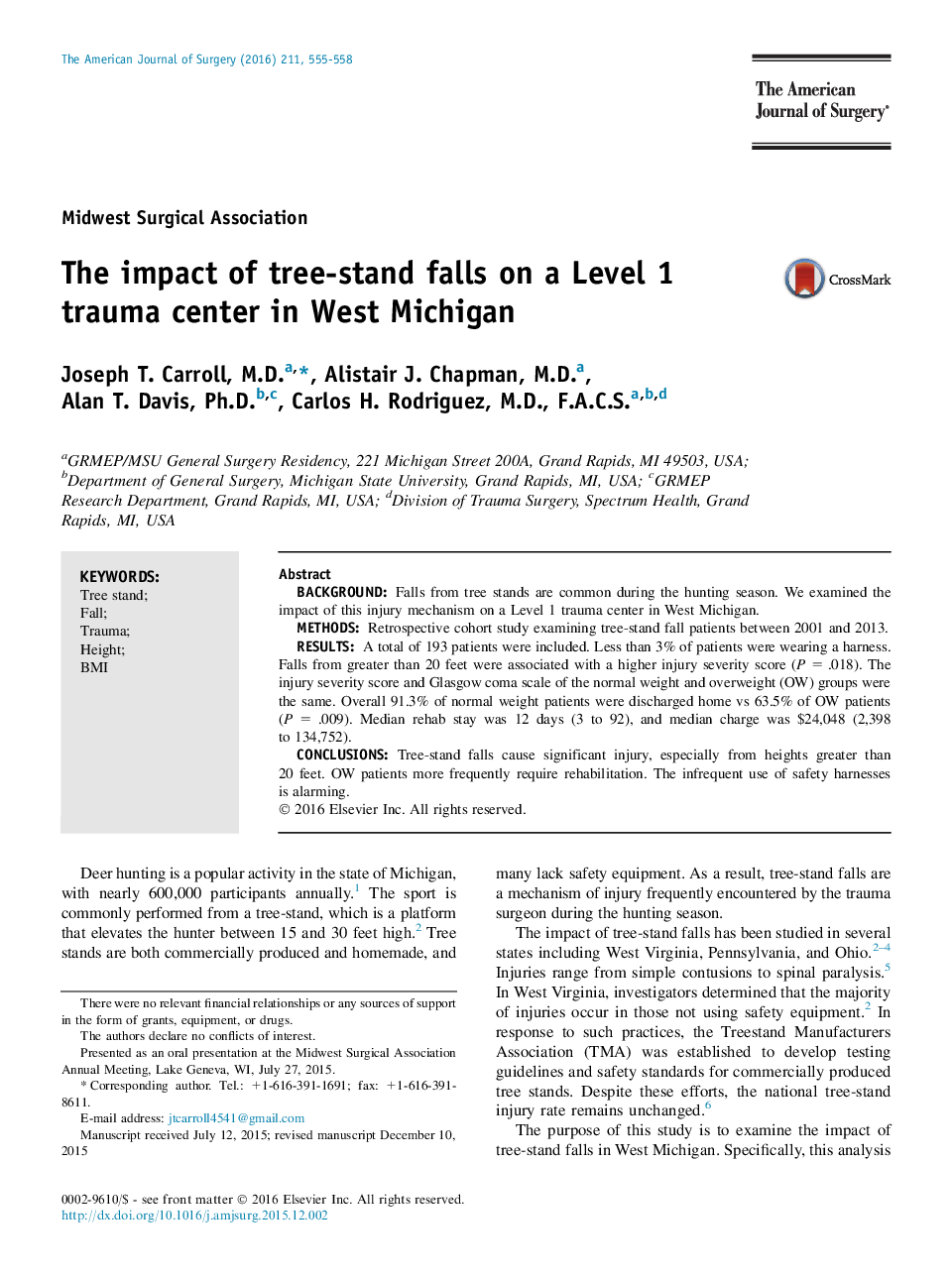| Article ID | Journal | Published Year | Pages | File Type |
|---|---|---|---|---|
| 4278225 | The American Journal of Surgery | 2016 | 4 Pages |
BackgroundFalls from tree stands are common during the hunting season. We examined the impact of this injury mechanism on a Level 1 trauma center in West Michigan.MethodsRetrospective cohort study examining tree-stand fall patients between 2001 and 2013.ResultsA total of 193 patients were included. Less than 3% of patients were wearing a harness. Falls from greater than 20 feet were associated with a higher injury severity score (P = .018). The injury severity score and Glasgow coma scale of the normal weight and overweight (OW) groups were the same. Overall 91.3% of normal weight patients were discharged home vs 63.5% of OW patients (P = .009). Median rehab stay was 12 days (3 to 92), and median charge was $24,048 (2,398 to 134,752).ConclusionsTree-stand falls cause significant injury, especially from heights greater than 20 feet. OW patients more frequently require rehabilitation. The infrequent use of safety harnesses is alarming.
